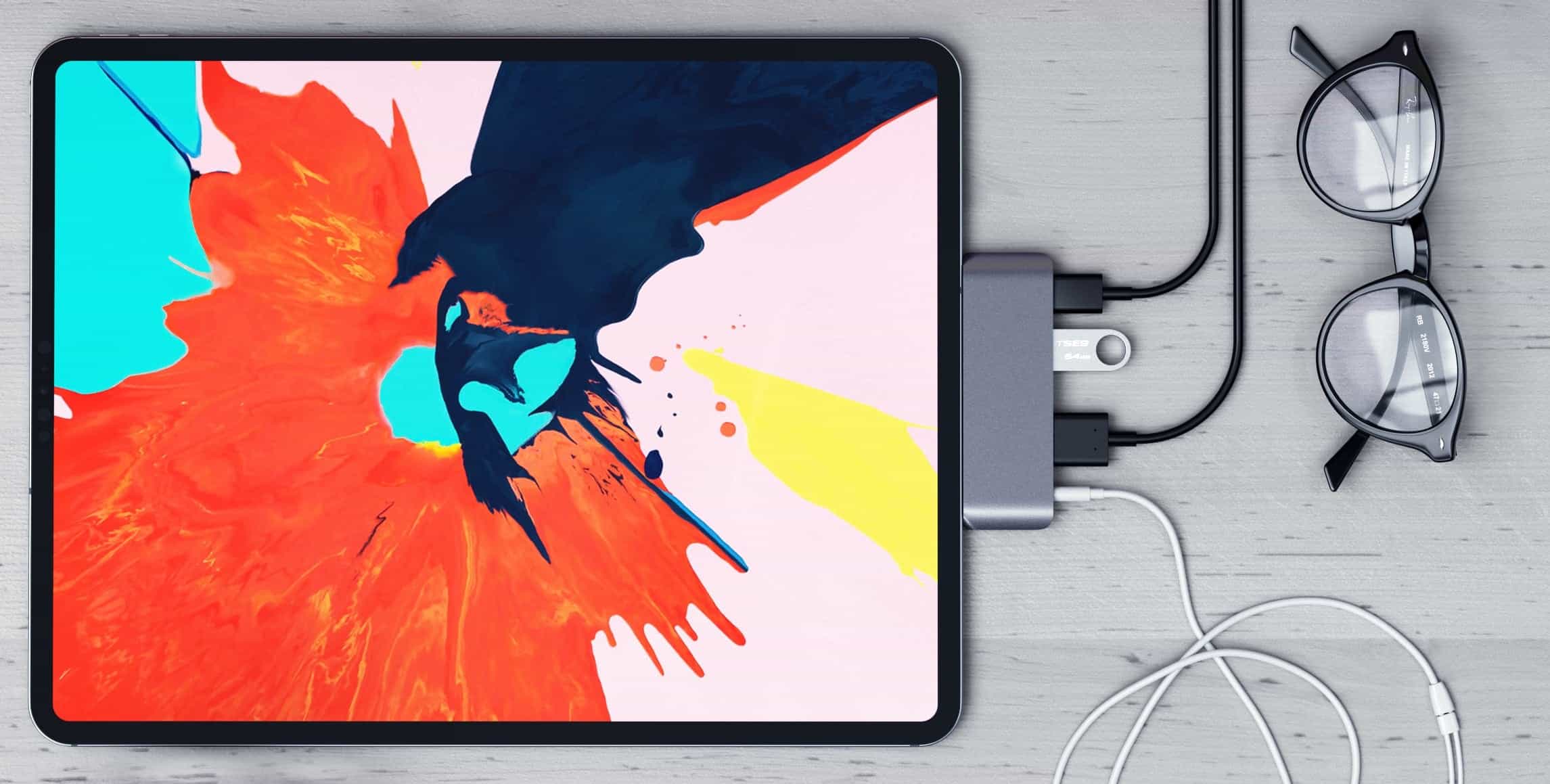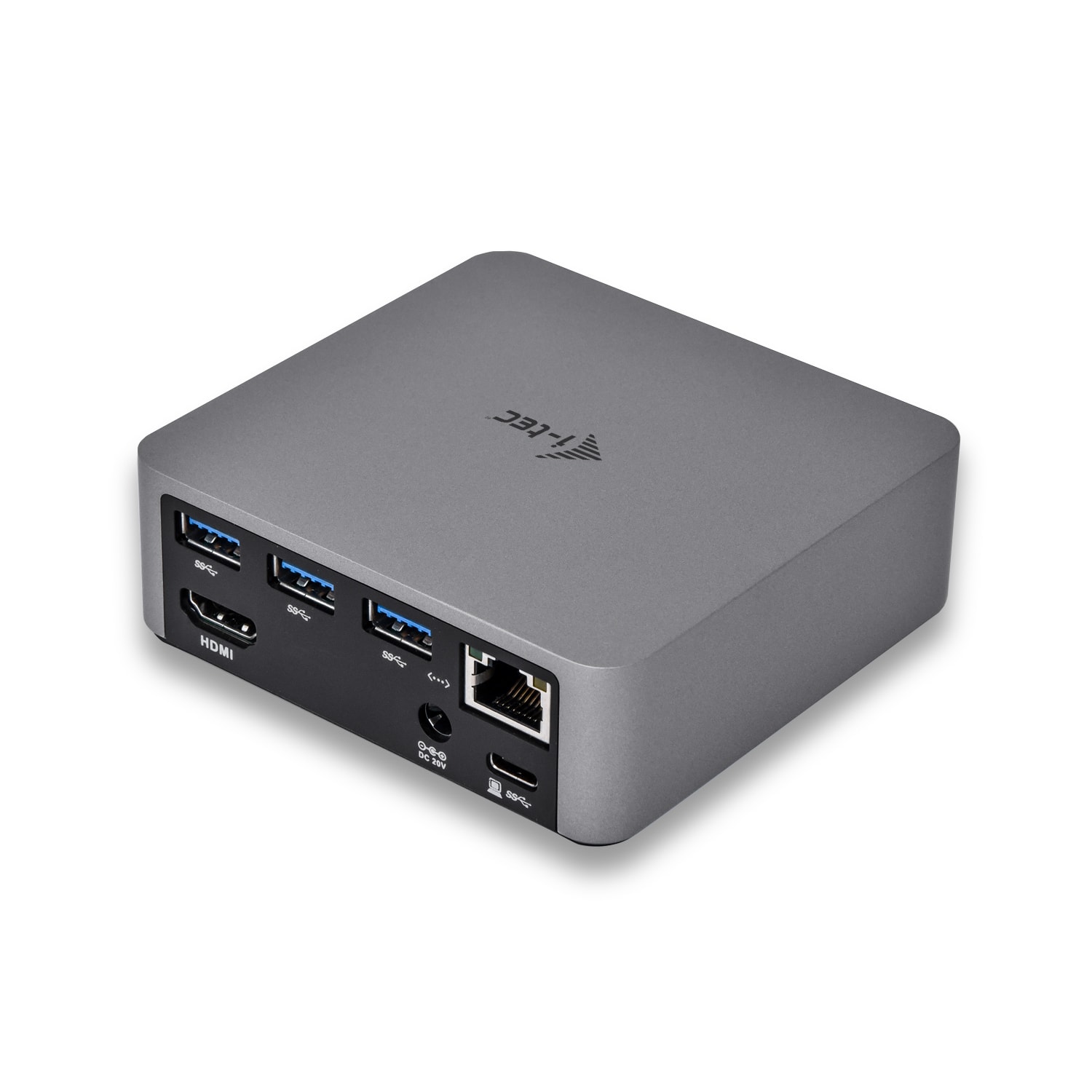In the nearly two months I’ve been using the new iPad Pro with USB-C hubs, I’ve found these accessories to be alternately miraculous and frustrating.
This isn’t a review, or a how-to. It’s just a look at what’s right — and what’s still very wrong — with USB-C and the 2018 iPad Pro.
This post contains affiliate links. Cult of Mac may earn a commission when you use our links to buy items.
iPad Pro USB-C hubs
I’ve used two different hubs. The first was an Anker laptop hub with a too-short cable that caused it to hang off the side of the iPad when in a stand1. I replaced that with a desktop-style hub that has its own power supply, and a USB-C PD (power delivery) port instead of a built-in cable. But this comes with its own problems.
Hang in there

Photo: Satechi
Almost all reasonably priced USB-C hubs are made for notebook computers. They have a short tail that plugs into a port on the side of the laptop, and is long enough to let you hide the device around the back. This design is terrible for an iPad.
If you use the iPad on a desktop, with a stand and/or a keyboard, this kind of hub hangs off the side, putting its own weight, and the weight off all those accessories attached to it, on the iPad’s own USB-C port. It also looks terrible.
If you use the iPad on your lap, or in your hands, these dangling hubs feel even more unwieldy.
Desktop hubs

Photo: i-tec
Right now, I’m writing this article on my iPad using a Bluetooth keyboard, with just the supplied power cable to keep it juiced. But I also use my iPad for making music, and that’s where the hub comes in. I’m now using this desktop puck from i-tec, an Eastern European brand which sells on Amazon. As I mentioned, it packs its own power supply, and can use any USB-C cable to connect to the iPad. The included cable is a couple of feet long and works at full data speeds.
The hub offers three USB 3.1 data ports, plus a slower USB 2.0 power and data port on the front. There’s also an HDMI port, an Ethernet port and a 3.5mm headphone jack.
One thing that gets overlooked is that you can plug a regular old USB-A hub into any of the USB-A ports on the USB-C hub, expanding it quite nicely for older gear. I have a small USB mixer hooked up directly to the i-tec, and an old hub for connecting MIDI keyboards and the like. It mostly works.
However, I wouldn’t buy this hub again.
Sound advice
My No. 1 reason for using a USB-C hub with my iPad Pro is for audio. And this hub isn’t good for audio. That’s because of — ironically — that 3.5mm audio jack.
The way iOS USB audio works is that it can only be connected to one audio device. It always will switch to the last audio device you connect. So, say I have my setup running fine, with a USB mixer connected to my iPad via this hub. If I connect a pair of headphones to the i-tec hub, it will steal the audio signal away from the mixer. The only way to get it back is to power-cycle the mixer.
Worse, the i-tec itself counts as an audio device. This means that I must connect and switch stuff on in the correct order. To use it, I first need to connect the iPad and switch on the hub. Only then can I switch on the mixer. This is a shame, as the hub is otherwise great.
Hubbub
USB-C hubs aren’t quite there yet for the iPad Pro. The situation is confusing at best. On the other hand, there is a lot of choice in this part of the market now that the iPad can use USB-C instead of Lightning.
iPad Pro and USB-C: The rest of it
Other than hubs, the situation is more or less fine. Most USB accessories aren’t yet USB-C. And even if they were, you’d have to buy a whole new device to replace one you already own. Why ditch a USB 2.0 audio device when USB 2.0 is already fast enough for audio bandwidth?
Charger-wise, I like the faster charging offered by USB-C. But I don’t like having to use a different cable than I use on my iPhone.
We’re in a transition phase right now. And that’s fine, because the iPad Pro is a high-end machine for folks with specific needs. Perhaps if the regular iPad switches to USB-C with its next hardware update, we’ll start to see more accessories. Eventually, the situation is sure to improve. In the meantime, I’ll have to get used to plugging and unplugging things in just the right order.
- Which it always is whenever I’m using the iPad with accessories ↩
![Two months with iPad Pro and USB-C [Opinion] This is a great-looking hub, but it still has problems.](https://www.cultofmac.com/wp-content/uploads/2019/01/17FBF35A-E873-4F81-B8AA-AC37657ADEB2.04d5859d0c894faba91c2a31752e2290.jpeg)

